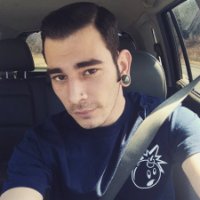They’ve bravely stood up to the government, vowed that “never again,” will there be a mass shooting at a school.
And the students of Marjory Stoneman Douglas High School in Parkland, Florida, where 17 of their fellow students were killed, are marching for their lives, and the lives of others.
On March 14. at 10 a.m. in every time zone, teachers, students, administrators, parents and allies are encouraged to walk out of their schools for 17 minutes — one minute for every person killed at the Florida school.
The students have been garnered attention, with Emma Gonzalez’s emotionally-charged speech outside a federal courthouse becoming one of the most prolific.
“Every single person up here today, all these people should be home grieving. But instead we are up here standing together because if all our government and President can do is send thoughts and prayers, then it’s time for victims to be the change that we need to see,” she said.
And they should be grieving because the impact of the shooting will forever impact their lives.
Cody L. Borawa has been battling PTSD since he returned from fighting in Kandahar, Afghanistan in 2012. He was just 18 when he signed up to join the US Army.
He says upon his return to U.S. soil, his life somewhat fell apart.
“I went through a range of emotions after I came back,” he says. “I was sad that I had lost my friends, but I was mostly angry at myself as if I could have done more to stop it (which isn’t true) and I was angry that we were even in the situation we were.
“I turned to alcohol pretty heavily to try and dull the memories and pain of loss, all that did was ruin MY life that I was still living. I became pretty depressed and suicidal not really knowing how to handle my feelings properly. I eventually turned to my close friends/peers to talk about what I was going through and it helped. It’s something that I still consistently do to this day to keep myself on the right track. It all feels surreal – but I’ve learned at least for myself over the years what my triggers are and staying away from depressants. The memories won’t ever leave you, you’ll always battle those demons. But there are healthy ways to do so. ”
He continues: “As a 21-year-old kid in a war zone you see things that a normal person would never experience. You see these things in movies and its pretty close to accurate, but seeing that horror with your own eyes…having that be a part of your own memories is another story.”
What does he believe the difference in PTSD is with someone who has fought for their country and someone who is a survivor of a mass shooting?
“It’s hard to say,” he says. “I’ve seen death in front of me just as much as I could assume someone seeing a mass shooting would see. The biggest difference is I chose to put myself in that position and generally knew what I was getting into. I feel like the trauma is probably the same, but I think I have an easier time dealing with that trauma with the fact I knew what I would see and experience in that regard.”
Cody’s advice?
“To COMMUNICATE,” he explains. “Don’t be ashamed to get help and talk to someone, you have to get it out and face the trauma so that you can heal. ”
These students should be applauded for their efforts to fight for gun control, but all of us should take into account the inner scars that they will carry around for the rest of their lives.



